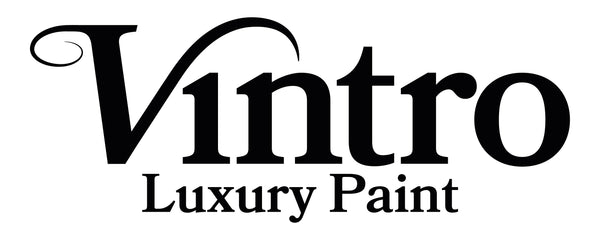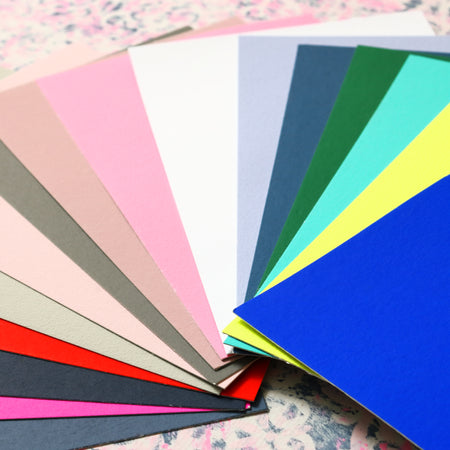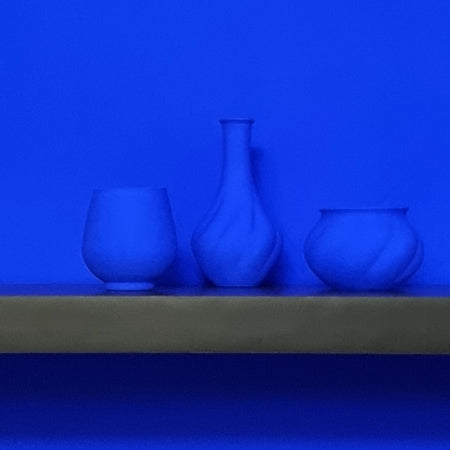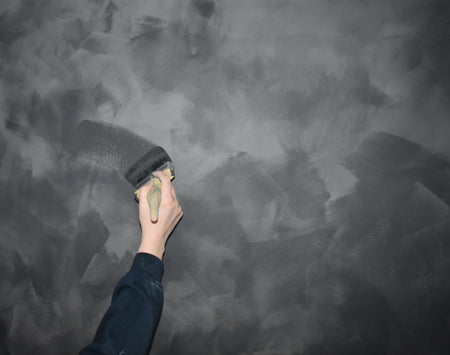What Can I Paint With Chalk Paint?
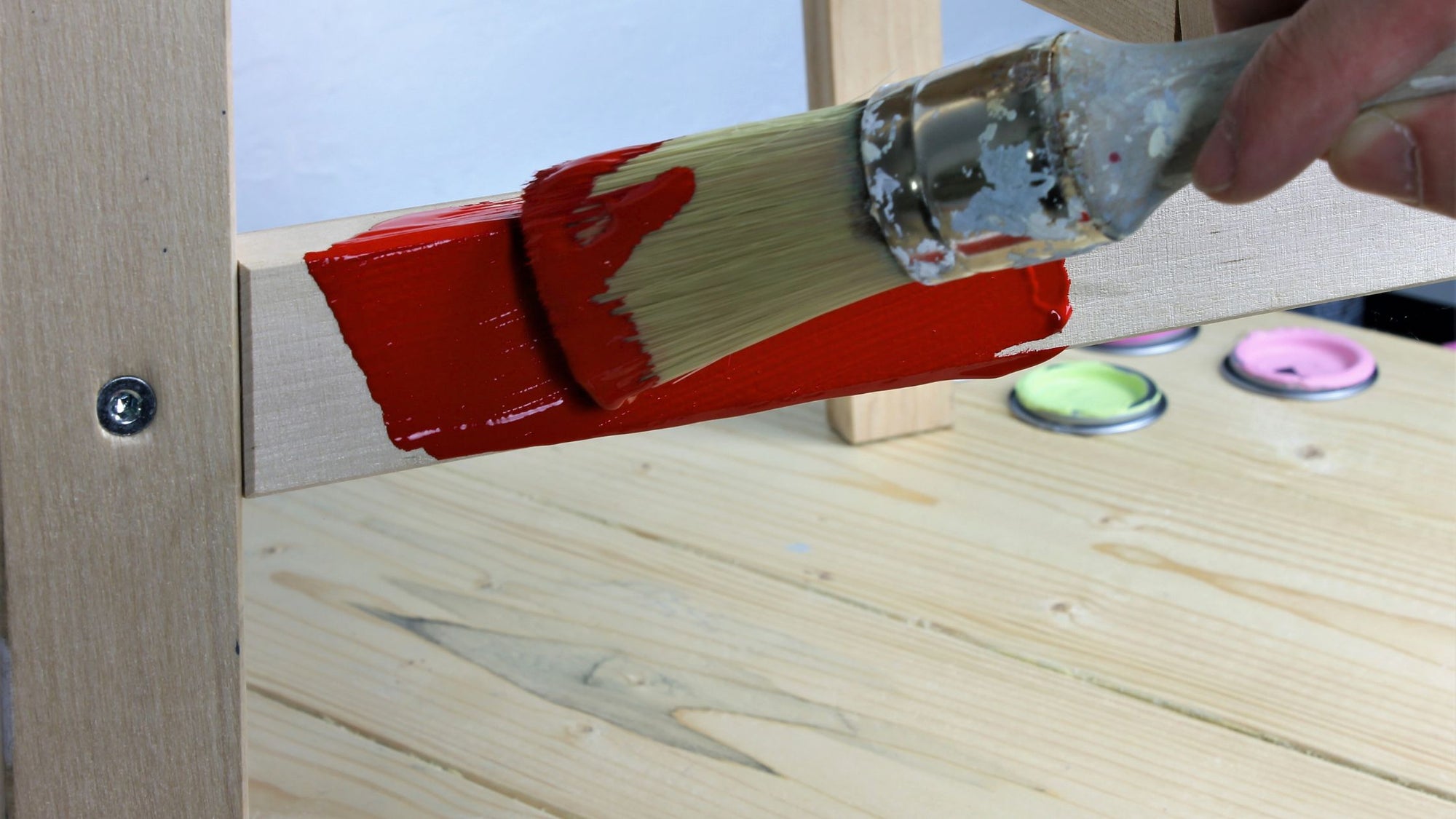
The short answer is, you can paint just about anything with Chalk Paint!
Antique, Mahogany & Oak.
Most old wooden furniture can be just cleaned and then painted. However, some may have tannins, dyes or old stains that may show through the initial layer of Vintro Chalk Paint and is called “bleed through” which usually shows as orange or pink staining of paint. It can be prevented or blocked by using Vintro Extreme Lacquer or Vintro Supreme Primer which can be painted over the entire piece prior to painting with Vintro Chalk Paint. The lacquer needs to be left a full 24 hours dry time before repainting to give a full stain block. This method can also be used to seal wood knots on new wood, stains on ceilings, walls or floors.
Inlaid, Melamine or Veneered Furniture.
Once cleaned, inlaid, melamine or veneered furniture can be painted with no further preparation. We recommend that you ensure that all the inlays or veneers are intact or fill missing areas with a wood filler prior to painting. Often the edge of inlay will show through when you paint it and this could be highlighted as a nice feature by using it as a guide to add a contrasting colour or metallic paint.
Bare Wood or Walls.
Vintro Chalk Paint gives a lovely finish when painting on wood. However, when painting on bare wood or walls you will find that the first coat will soak in and does not just sit on the surface. We recommend that you make a mixture of 50:50 paint to water ratio for the first coat or use Vintro Supreme Primer. Should there be any knots that might leak sap, we recommend sealing the wood prior to painting with Vintro Extreme Lacquer – this forgoes the need to apply a watered-down coat of Vintro Chalk Paint or Vintro Primer. Once dry you can carry on and achieve you desired look with Vintro Chalk Paint as normal.
Painting Upholstery.
There are so many chairs in homes, from dining room chairs to velvet settees or outdated leather settees, that are just waiting for their fabric to be updated and the easiest way is using Vintro Chalk Paint. No matter what type of fabric, whether it is brocade, velvet, cotton, leather, vinyl or wool, the process is the same. We must point out that painting the fabric on your chairs will take a few days and is not an instant process. It will change the feel of the fabric as you will be painting it and not dyeing it. The fabric will become stiffer and will feel almost like a leather finish once it has been waxed. The wax will keep the painted fabric soft and supple, whilst adding some protection. If the fabric is heavily patterned, some pattern may show through, but it will be coloured and this can add to the effect.
Firstly, ensure your chair is clean, give it a vacuum to remove any dust. Decant some Vintro Chalk Paint into a container and add enough water to make a 30:70 paint to water solution. The first two coats should be quite watery and will be quite messy to apply. When painting fabric it is best to build up the coats slowly, allowing for drying and light sanding between each coat rather than applying the paint too thickly, as this will lead to cracking as the paint dries.
Apply the first coat to your fabric in an even coat, if applying to velvet or fabric with a nap, ensure you paint the nap flat. Leave to dry in a warm room for at least 24 hours. Don’t be disappointed by the first coat as the look will be that of a whitewashed fabric. Lightly sand before the second coat with a fine grit sandpaper. Vacuum to remove paint dust. The sanding will help to prevent the fabric becoming too stiff and reduce possibility of cracking. Apply the second coat of the 30:70 paint to water solution to your fabric evenly. Leave for 24 hours in a warm room again and lightly sand once dried. For the third coat, make a solution of 40:50 paint to water and apply evenly. Leave to dry for 24 hours again in a warm room and lightly sand and remove dust once dried. Sometimes more than three coats will be required for heavily patterned or dark coloured fabric but applying a fourth coat of 50:50 paint to water should suffice. Once you are happy with coverage leave to dry and apply a thin coat of Vintro Wax using either a Vintro Wax Brush or a lint free cloth. Really work the wax into the paint and then buff. We recommend that you apply two coats of Vintro Wax, however, the second coat could be dark wax which will give a different look if you do not want your chair to have a slight antique look.
Dip dyeing fabric.
This is a quick and easy way to dye fabric to match your décor and works particularly well on natural fabrics such as linen and cotton. Start by making a dye solution of 30mls of Vintro Chalk Paint to 1 litre of warm water. Ensure that you mix the paint thoroughly to ensure it is dispersed into the water. Dip your fabric into your dye ensuring that you submerge it all, move it around to ensure even coverage. When you are happy that all your fabric is coloured, take it out of the dye solution. Lightly squeeze any excess water out of your fabric and leave to dry in a tumble dryer or iron the fabric once it has dried on a line. The heat will help seal the colour into your fabric and you will be able to wash your fabric on a cool wash. Once dried you will see that the fabric has become a subtle variation of your chosen colour. If you want the colour to be deeper, repeat the dying process with same paint/water ratio.
Metal.
Most metal pieces of furniture or bric-a-brac can be painted with Vintro Chalk Paint. Firstly, clean the piece with sugar soap solution. If there are any small rust areas which you want to remove you can do so easily with a paste of baking soda and water with fine steel wool. You can now paint and finish your piece as required.
Glass, Porcelain & Clay.
Painting glass candlesticks, old glass vases, plant pots, ornaments, decorative plates or cups are a cheap and easy way to update your interior. Prior to painting, clean the area with a sugar soap solution or clean spirit if surface is greasy. Painting on glass is relatively easy, it just takes a bit longer for the paint to dry as the paint will be sitting on top of a shiny surface. Once dry, your project can be finished as required. For most projects such as glass-fronted cabinets or a table tops you will probably find it more effective, especially if using wording, to paint on the reverse side of the glass, remembering that you will need to paint patterns, effects or wording back to front. If you paint on glass panels by mistake paint can easily be removed using a glass scraper. Although equally as shiny, you will be able to paint directly on porcelain or clay items without any problems and can be finished with wax or lacquer. We would not recommend that you paint everyday cups and plates.
Plastic.
Plastic chairs, tables, ornaments, plant-pots and frames are just a few objects that are relatively cheap that can be updated and made to look unique with a coat of Vintro Chalk Paint. Clean with a sugar soap solution prior to painting and then just commence painting as normal, finishing with either one of our Vintro Lacquers or Vintro Wax, dependent upon whether it is for indoor or outdoor use.
Various examples can be found on our Instagram or Facebook pages.
